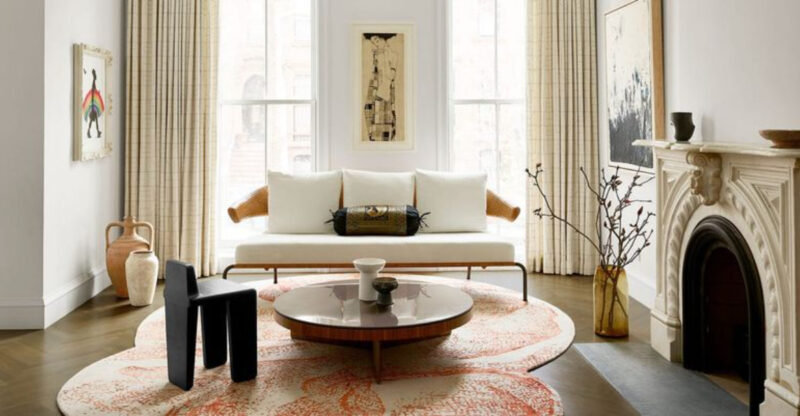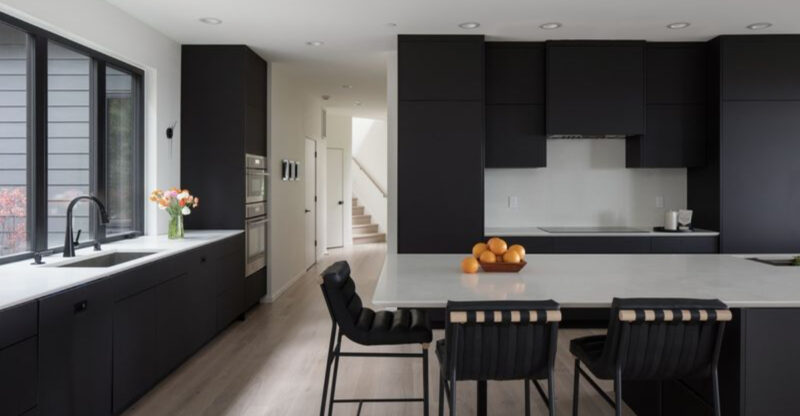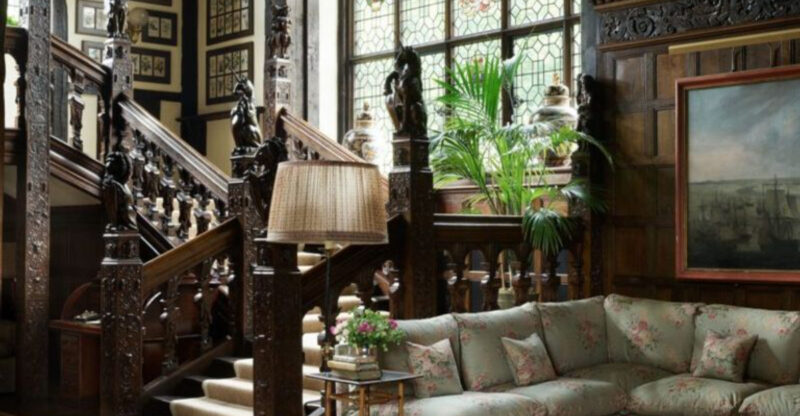11 Outdated Backsplash Styles + 8 Ugly Choices
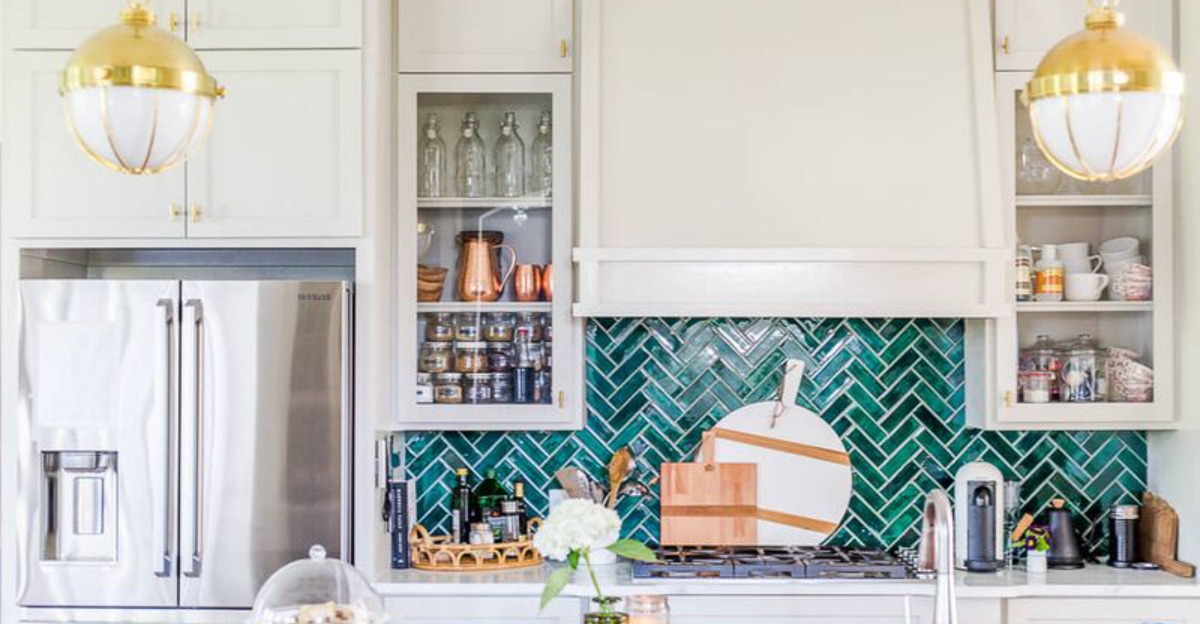
Backsplashes do more than protect your walls – they set the tone for your entire kitchen or bathroom. The right design can elevate a space, while the wrong one can instantly make it feel outdated or overdone.
With trends constantly evolving, it’s easy to fall for styles that won’t age well. Whether you’re remodeling or just dreaming, knowing which backsplash choices to skip can save you money, time, and long-term regret.
1. 3×3 Ceramic Tile Squares
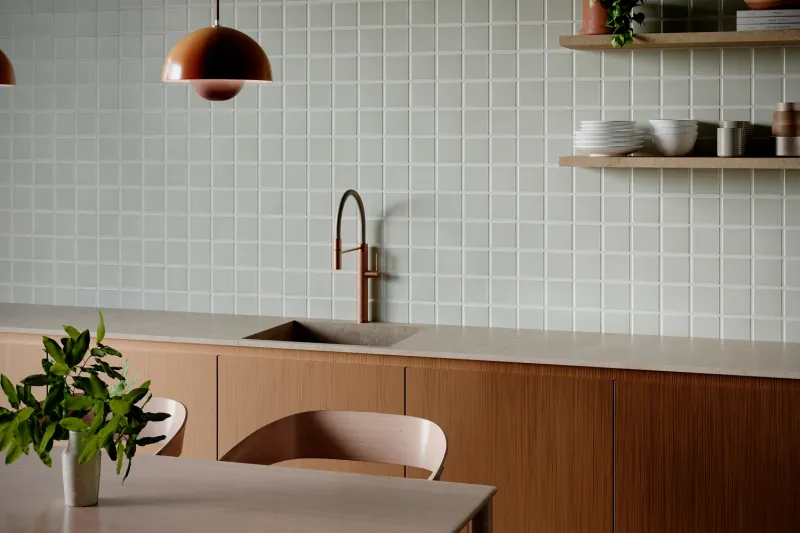
Once the standard in every 1990s kitchen, these tiny squares create a grid of grout lines that collect grime and discolor over time. No amount of scrubbing can keep them looking fresh.
These 3×3 ceramic tiles make your kitchen feel instantly outdated, like wearing shoulder pads to a modern cocktail party. Plus, their small size creates visual noise that makes spaces feel cluttered and chaotic.
2. Tumbled Stone Mosaic
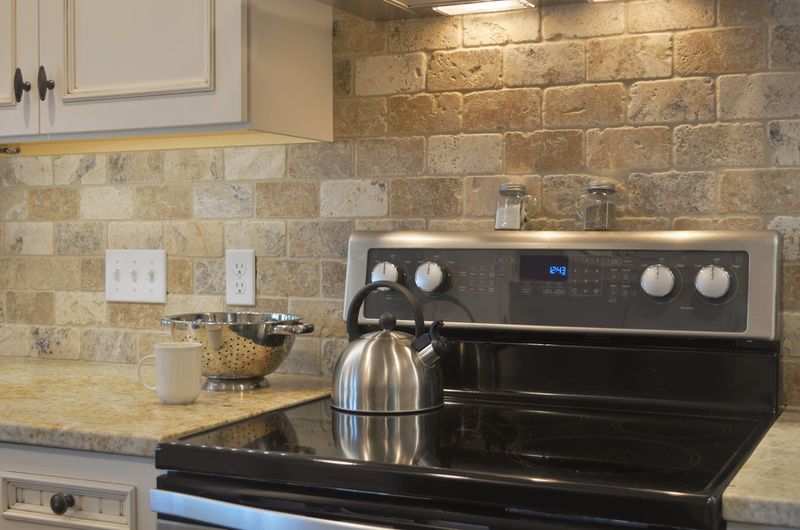
Remember when everyone wanted their kitchen to look like a Tuscan villa? The rustic, uneven texture of tumbled stone collects dust and cooking residue in all those little nooks and crannies.
Tumbled stone backsplashes scream early 2000s and make cleaning a nightmare. Their busy patterns and irregular surfaces also tend to make kitchens feel smaller and more cramped than they actually are.
3. Glass Tile Borders

Accent borders of glass tiles were all the rage in the early 2000s. Usually in blues or greens, these shiny strips were inserted into otherwise plain tile backsplashes like racing stripes on a family sedan.
Glass tile borders create an instantly dated look that screams “builder-grade renovation circa 2005.” Their random placement and often clashing colors make them an eyesore that’s hard to ignore.
4. Fruit And Vegetable Motifs

Hand-painted tiles featuring grapes, apples, and other produce were once considered charming kitchen decor. Now they look about as sophisticated as a novelty coffee mug.
These kitschy fruit motifs turn your kitchen into a time capsule from the 1980s and 1990s. The painted designs often fade unevenly over time, making them look even more tired and worn than their outdated style already suggests.
5. Diagonal Tile Layouts

Setting ordinary square tiles on a diagonal was once considered fancy and worth the extra cutting and waste. The angled lines create visual chaos that fights with the straight lines of cabinets and countertops.
Diagonal layouts use more material and require more cuts, yet they date a kitchen instantly. The busy visual effect makes even the simplest tile selection look chaotic and disorienting to the eye.
6. Copper Tin Ceiling Tiles
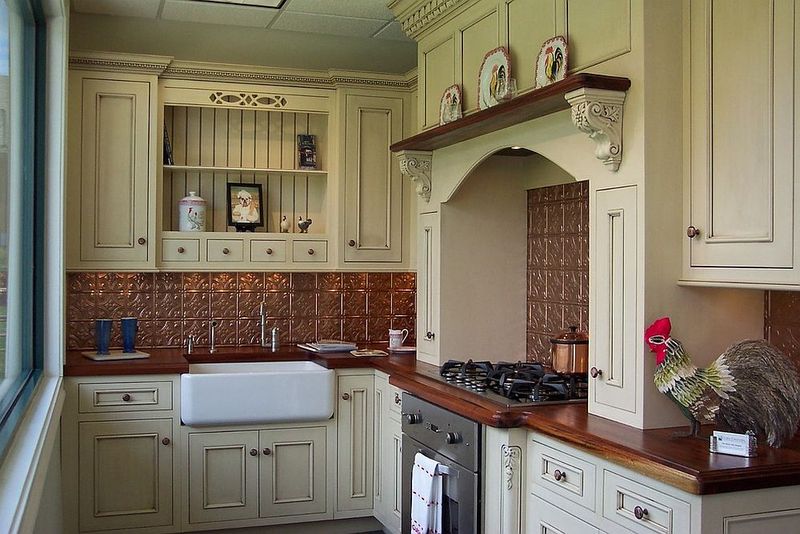
Repurposed tin ceiling tiles had a moment as backsplashes in the farmhouse and industrial trends. Their intricate patterns collect grease like magnets, and the metal oxidizes unpredictably, creating patchy discoloration.
Copper tin tiles require constant maintenance to prevent tarnishing and staining. Their ornate patterns also tend to compete with other design elements, creating a visually overwhelming effect that’s anything but relaxing.
7. Glass Mosaic Tiles In Rainbow Colors
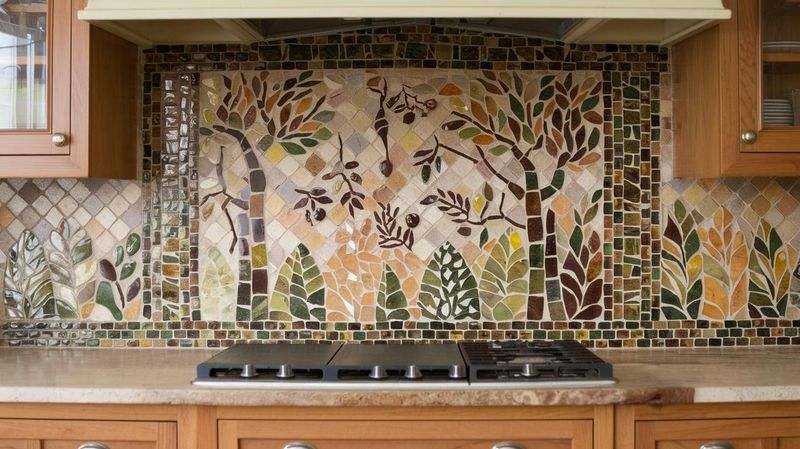
Tiny glass tiles in multiple colors were all the rage in the early 2000s. The rainbow effect created busy, confetti-like surfaces that competed with everything else in the room.
Glass mosaic backsplashes in multiple colors make kitchens feel like children’s playrooms rather than sophisticated cooking spaces. Their reflective surfaces also tend to show water spots and fingerprints, requiring constant cleaning to look presentable.
8. Travertine With Tumbled Edges
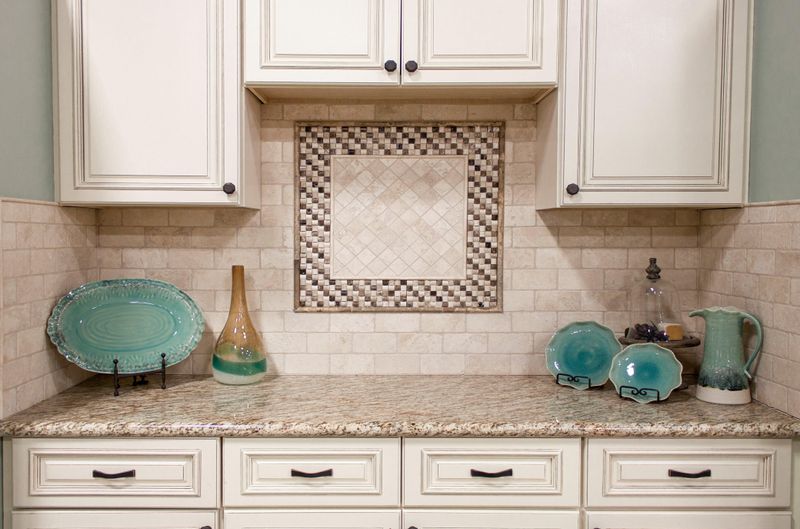
Beige, cream, and tan travertine tiles dominated the 2000s luxury home market. Their pitted surfaces and tumbled edges were meant to look expensive and Old World but now just look tired and collect grime.
Travertine backsplashes have countless tiny holes that trap food particles and grease. The natural stone also requires regular sealing to prevent staining, making them as high-maintenance as they are outdated.
9. Decorative Mural Centerpieces
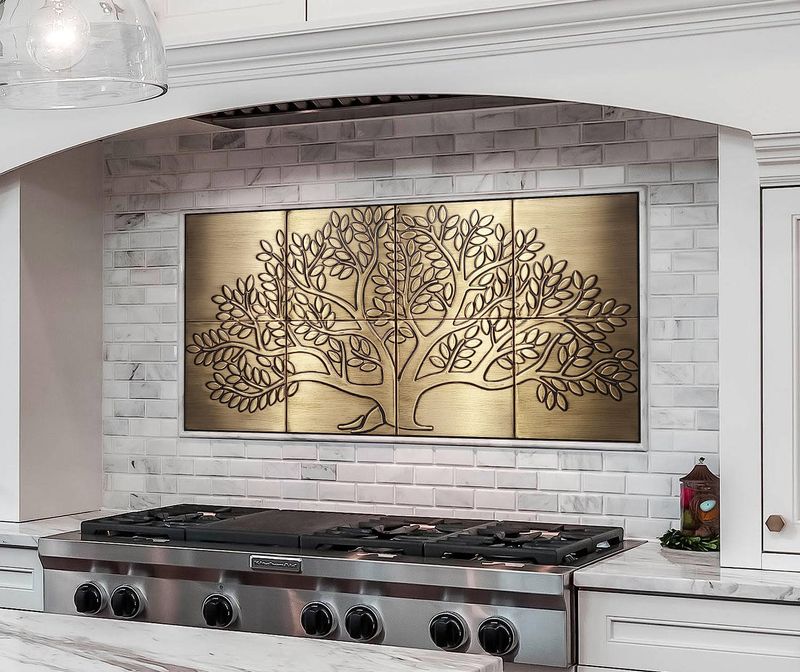
Large ceramic murals centered above the range were peak 1990s kitchen decor. Usually depicting Mediterranean scenes or wine bottles, these focal points now look like oversized postcards stuck to your wall.
Mural centerpieces date your kitchen instantly with their specific color palettes and themes. They also limit future design changes since they’re so dominant that everything else must coordinate with their fixed color scheme.
10. 4-Inch Backsplash Strips

The bare minimum approach of the 1980s and 1990s was a slim 4-inch strip of the same material as the countertop. This meager attempt at splash protection leaves most of the wall vulnerable to cooking splatters.
These short backsplash strips fail at their primary job of protecting walls from water and stains. The abrupt transition from countertop material to wall creates an awkward horizontal line that visually chops up the kitchen instead of creating flow.
11. Shiny Mirror Tiles
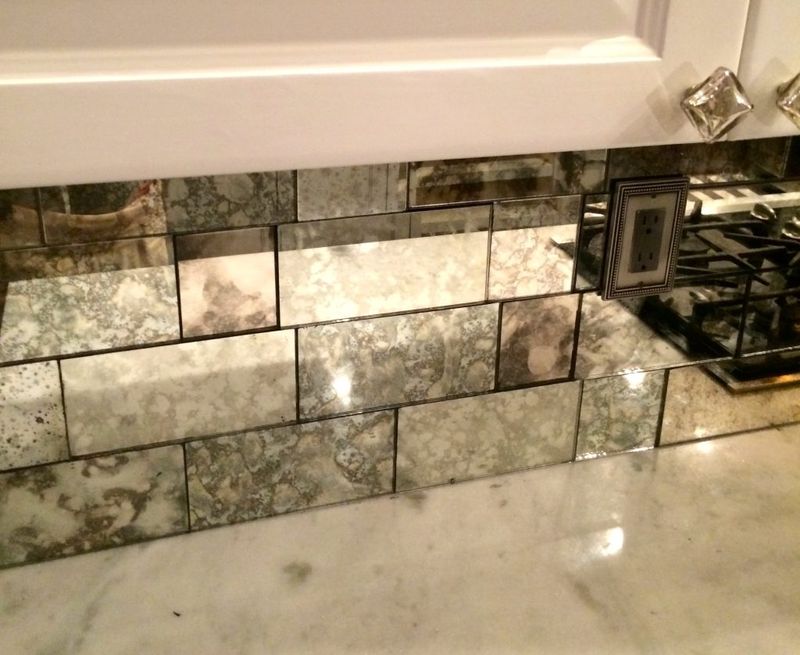
Mirror backsplashes had brief popularity in the 1970s and again in the early 2000s. Every fingerprint, water spot, and grease splatter shows up dramatically, making them impossible to keep clean.
Mirrored tiles create harsh light reflections while cooking and show every flaw. They also tend to develop a cloudy film over time from cleaning products, and the silvering often deteriorates around the edges, creating an unattractive black border effect.
12. Busy Patterned Cement Tiles
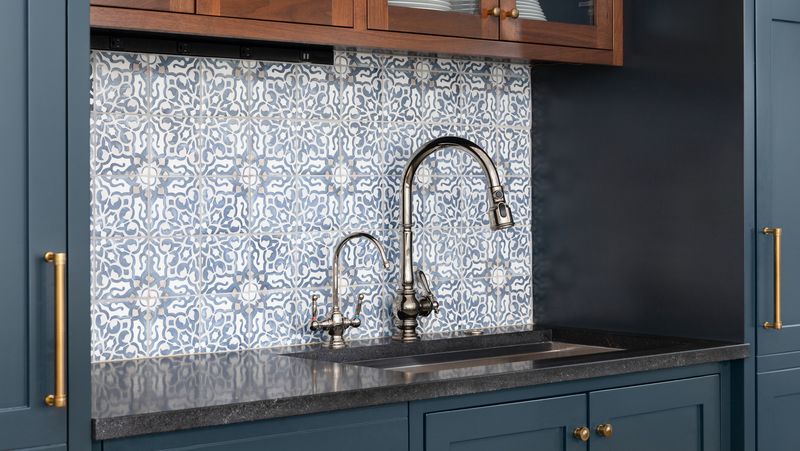
Geometric cement tiles with bold patterns peaked around 2016. Their busy designs quickly overwhelm a space and make it feel chaotic rather than stylish.
Patterned cement tiles stain easily despite sealing and show wear patterns in high-traffic areas. The trendy patterns that seemed so Instagram-worthy a few years ago now mark your kitchen as obviously renovated during a specific trend window.
13. Chevron Patterns In Contrasting Colors

Bold chevron patterns in high-contrast colors were everywhere from 2010-2015. The zigzag effect is visually jarring and instantly dates your space to that specific trend period.
Chevron backsplashes create a busy, almost dizzying effect that competes with everything else in the room. The stark contrast between colors (often black and white) makes every imperfection and uneven grout line painfully visible.
14. Mismatched Glass And Stone Combinations
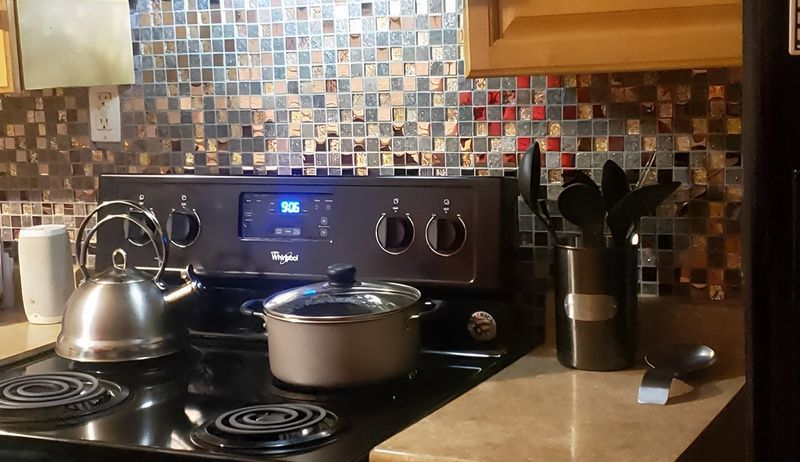
Random combinations of glass and stone tiles in the same backsplash were popular in the 2000s. The mix of shiny and matte surfaces creates a confused, cluttered look that resembles a materials sample board.
These mismatched combinations lack cohesion and often include too many colors and textures. The different materials also age differently, with glass showing scratches and stone developing patina, making the backsplash look increasingly disjointed over time.
15. Chalkboard Paint Backsplash
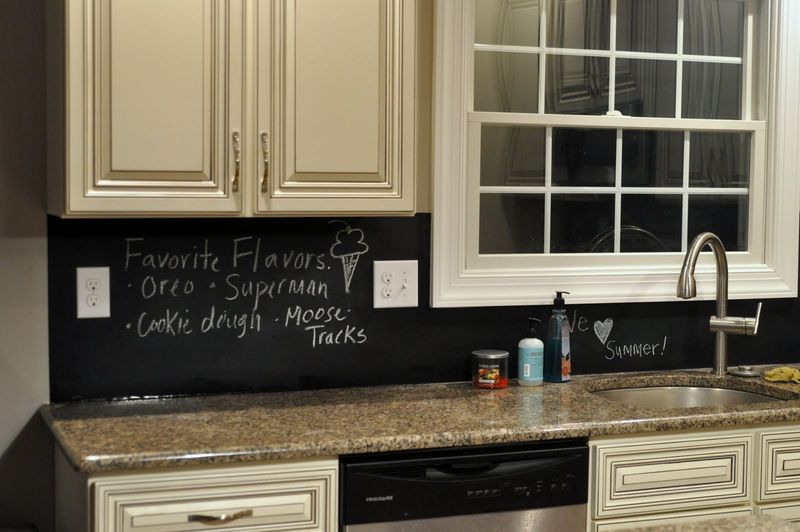
Functional chalkboard backsplashes had their moment around 2012. The reality of chalk dust in food preparation areas and the constant smudged appearance makes them impractical and messy.
Chalkboard backsplashes quickly show wear paths where people touch them most. The dark color also tends to make kitchens feel smaller and darker, while the constant presence of half-erased notes and drawings creates a perpetually cluttered look.
16. Word Art And Inspirational Quotes

Backsplashes featuring words like “Eat” or phrases like “Live Laugh Love” were briefly trendy but aged poorly. Nothing dates a kitchen faster than typography that references a specific era of home decor.
Word art backsplashes make your kitchen look like a mass-produced home goods store item. The novelty wears off quickly, leaving you stuck with someone else’s inspirational message that you’ll soon find more irritating than uplifting.
17. Faux Brick Panels
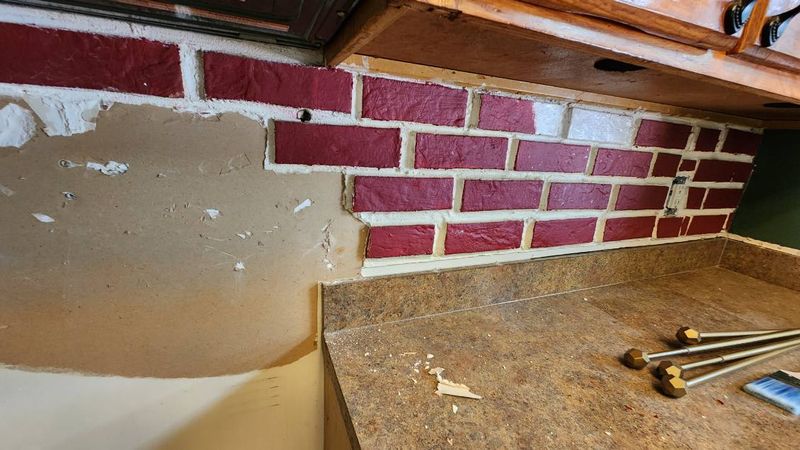
Fake brick panels made from thin veneer or even vinyl were a budget-friendly attempt at industrial chic. Their uniform pattern and perfect edges instantly give away their artificial nature.
Faux brick backsplashes often peel at the edges when exposed to heat and moisture. The synthetic materials can also discolor unevenly over time, especially near cooking areas, creating an even more artificial appearance than when first installed.
18. Iridescent Glass Tiles

Shimmery, color-shifting glass tiles had a moment in the early 2000s. Their disco-ball effect creates visual chaos and dates a kitchen instantly to that specific trend period.
Iridescent glass backsplashes show every fingerprint and water spot dramatically. Their constantly changing colors also make it nearly impossible to coordinate with other design elements, limiting your options for everything from paint colors to accessories.
19. Subway Tile With Dark Grout
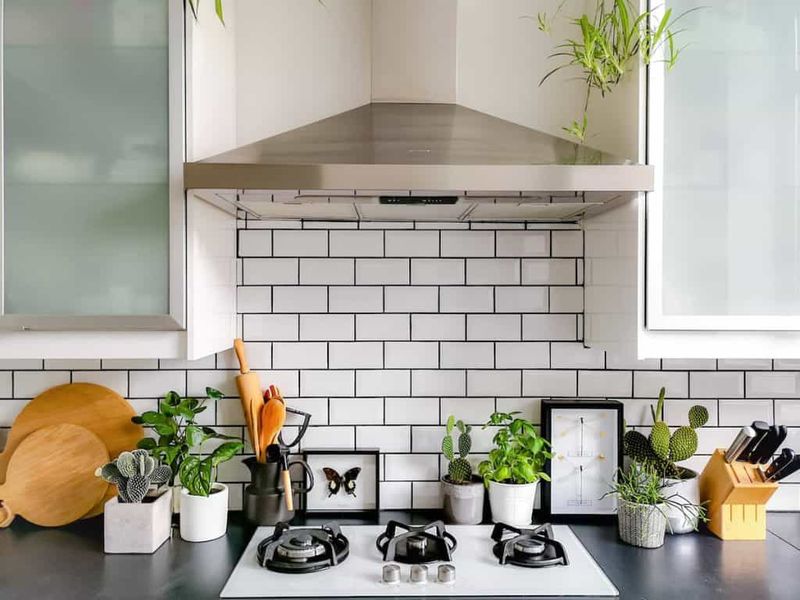
Dark grout with white subway tiles reached peak popularity around 2015. The high-contrast grid effect that once looked edgy now reads as a dated trend choice rather than a timeless design decision.
White subway tiles with dark grout show every imperfection in installation. The stark contrast creates a grid-like pattern that draws attention to any unevenness, while the dark grout itself often fades unevenly, especially in areas exposed to cleaning products.


